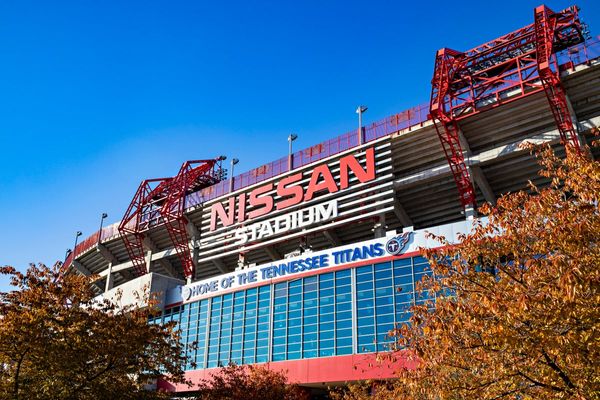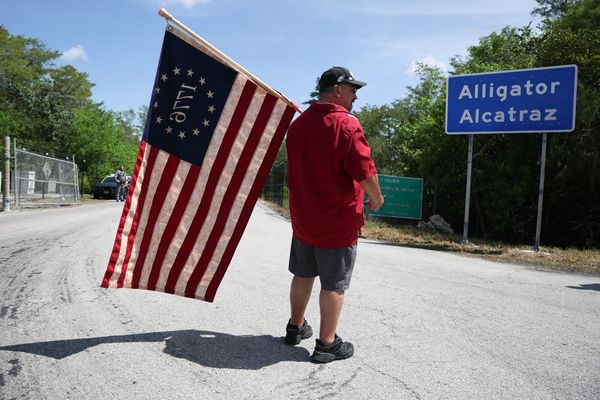
Stellantis’s CEO recently blamed Maserati’s poor performance on bad marketing.
"If sales are sluggish right now, it is a matter of marketing." And sales are, indeed, sluggish; The company only sold about 6,500 units between January and June of this year, which marks a 50-percent decrease over the previous year.
But that doesn't tell the whole story.
History says that Maserati isn't shy about spending to woo customers. In 2014, the automaker dished out a cool $11 million on a well-received Ghibli Super Bowl spot entitled, "Now, We Strike." Another $5 million in ad spending was distributed elsewhere throughout the big game for a total of $16 million total.
Granted, that was 10 years ago when the company was still under Fiat Chrysler's watch—a conglomerate that spent nearly $90 million on Super Bowl spots for all of its brands between 2010 and 2015. It still is, to this day, the biggest ad campaign in company history.
Super Bowl spending has admittedly slowed under new leadership. Stellantis didn't dish out any money on Big Game advertising in 2024, alongside GM and Ford. But that's not to say Maserati is taking the Tesla approach to promoting its cars—meaning, not spending at all.
In 2017, Maserati announced an official partnership with Accenture. At the time, Accenture was the sixth-largest ad agency in the world, just behind other big names like Omnicom and Dentsu. In 2019, Accenture purchased Droga5, and in 2022, Droga5 became Maserati's "global creative agency" for all ad spots moving forward. It still is today.
Under Accenture and Droga5, Maserati has rolled out dozens of advertising and marketing campaigns promoting vehicles like the MC20 sports car and the new Grecale SUV. The company even tagged soccer superstar David Beckham as its "brand global ambassador" in 2021—no cheap feat.

With Beckham becoming the face of the brand, the company has produced dozens of ad spots with the superstar front and center. The duo officially announced their partnership three years ago with a video entitled, "Maserati and David Beckham: two of a kind," which currently has 1.4 million views on YouTube. Maserati has rolled out dozens of other videos with Beckham since then, countless print materials, and even given him his own special edition MC20: The Fuoriserie Edition.
The point is: Maserati still spends money on advertising and marketing, and lots of it. Although specific figures are hard to come by, in 2023, Stellantis earned €19 million from SG&A—or, "Selling, General and Administrative Expenses." SG&A, Stellantis notes, "primarily includes costs for advertising and promotional activities." In 2021, Maserati spent an estimated $77 on advertising per each vehicle sold, according to AdAge.
Again, the numbers aren't inherently impressive when going dollar-to-dollar against advertising giants like Lexus and BMW (Lexus reportedly spent $956 on advertising for each vehicle sold, according to the same report), but the spending is certainly there.

Meanwhile, just down the road in Maranello, Ferrari spends virtually nothing on traditional advertising. In its 2023 annual report, the company stated: "Our clients are the backbone of our business together with our brand and our technology. We do not promote our brand or our cars through general advertising. Our main brand marketing and promotional activities have two principal targets. More generally, Formula 1 racing allows us to promote and market our brand and technology to a global audience without resorting to traditional advertising activities."
And yet, Ferrari’s deliveries are up so far in 2024. The company delivered 3,484 cars in the second quarter of this year, an increase of 2.7% over last year. A strong lineup bolstered by the Purosangue SUV and the 296 and Roma sports cars means it has no problem moving product.
So what is Maserati’s problem? Other than marketing?
From an outside perspective, it's impossible to say definitively what's wrong. An easy target is Maserati's long-standing battle with reliability issues. Under FCA, the Levante and Ghibli ranked as two of the least reliable high-end vehicles on the market, alongside their mass-market stablemates from Chrysler and Jeep. That reputation can certainly turn customers off a brand for years—look at Kia.
But the Levante and Ghibli are gone; Both models have been discontinued. And even prior to their departure, J.D. Power's 2023 quality study showed that Maserati improved by 73 points on the PP100 quality index. Its cousin, Ram, was the highest for initial quality, and down the street, Alfa Romeo ranked highest among premium brands for the first time. Maserati even saw its brand loyalty increase by 4.3 percent in 2022, second only to Genesis.

Unfortunately for Maserati, the Levante and Ghibli were also the brand’s two best-sellers. Now, the company won’t replace them for another few years. And with EVs. The Levante has been delayed until 2027, and a new Ghibli/Quattroporte until 2028. That kind of short-sightedness leaves the Grecale as the lone SUV, with the more niche GranTurismo coupe and cabrio, and the limited-production MC20. Not exactly a best-selling lineup.
And then there’s the aggressive EV push amidst slowing demand—by all of Stellantis. The V-8—once a Maserati staple—is now gone from the lineup entirely. The last V-8-powered Maserati (a Quattroporte, ironically) rolled off the production line this past August, and the company plans to stick with its Nettuno V-6 and electrification moving forward.
"With Maserati, we have the right cars and we have the right technologies... If sales are sluggish right now, it is a matter of marketing."
Elsewhere, Stellantis is slowing production, trimming jobs, and offering buyout packages as it attempts to restructure. Toward the tail-end of 2023, Stellantis halted production at its Mirafiori, Italy plant, responsible for the Ghibli, Quattroporte, GranTurismo, Levante, and the Fiat 500e. The company cited slow demand.
There are even rumors the company could be sold entirely. In July, Tavares said: "If [brands] don't make money, we'll shut them down. We cannot afford to have brands that do not make money." The larger company walked back the statement, but it was too little too late.

Maserati has definitely come a long way—reliability is up, its new products are well-regarded, and the next few years have lofty promises of exciting new vehicles. The GT2 Stradale is a good start. But marketing isn’t the main reason the company is struggling, the problem still lies in the product. And the management.
Years of perception issues have set the brand back, job cuts and production problems are delaying product, and discontinuing your best-sellers with no immediate replacements—that’s just bad business. All signs point to Tavares being out by 2026.
Maserati will have to power through for the next few years and hope the Grecale and GranTurismo can keep the company afloat until the next Levante and Ghibli/Quattroporte arrive. And even then, will there still be enthusiasm for electric Maseratis?
Hopefully the company survives long enough for us to find out.







